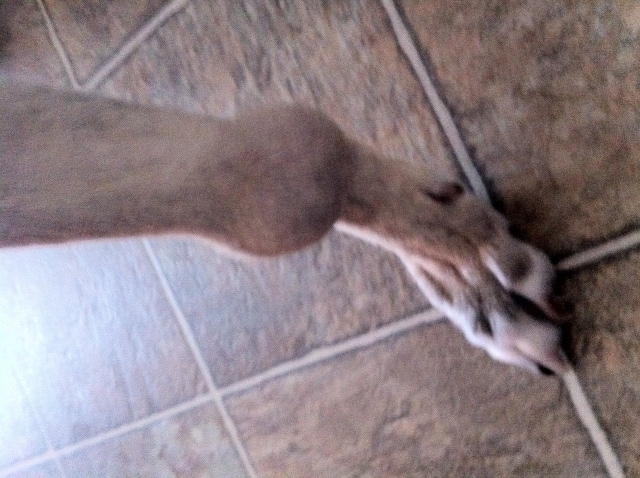QuestionI have a mixed breed dog we got from the pound about 11 years ago. They said she was 2 then so she is old. She has always seemed healthy, gotten all her shots, etc. but she gets very upset when she goes to the vet. When I took her in for her check up, the doc. found a place on her leg, it looked like a flesh colored tick to me (now though it is dark maroon and much larger) He said it was a "fatty tumor" due to her age and the fact it doesn't cause her any problem he doesn't want to remove it. She lickes it, and it looks bad but she is still very active. Have you ever seen this, is it common and should I hunt another vet?
AnswerHi Susan,
Just because your dog has developed this growth, it does not mean that she was more than 2 years old when you adopted her. It does mean that you are an observant pet owner, and are naturally concerned over the health of your beloved dog.
A "fatty tumor" or Lipoma is a benign fatty lump. They are very common in older, middle-aged dogs. Overweight female dogs are especially prone to developing Lipomas.
Lipomas are usually just under the skin, but they can be locally invasive, meaning they are meshed with muscle or connective tissue. Lipomas can also have additional blood or connective tissue as part of the growth. These growths can appear anywhere on the body, but they are most frequently located on the belly (mid-chest and down) and upper legs.
Provided your veterinarian certain that it is indeed a Lipoma, the watch-and-wait approach is usually what most vets recommend. The lump should be checked at regular intervals, to make sure there haven't been any cellular changes. Large lumps, especially those under a limb or in another location to interfere with movement or function, should be removed as soon as possible.
When one is worried about a lump and checking it frequently, it can be confusing to tell if it is growing or not. Since your vet has assessed the lump and you are officially "watching it" for any new changes, I recommend the following:
* Take a piece of wax paper and a felt marker.
* Lay the wax paper or tracing paper over the lump. Trace the outer edges of the lump.
* Date the wax paper.
* Repeat monthly (or shorter intervals, if your vet suggests) to monitor.
Dogs that form Lipomas are prone to forming more as time goes on. However...each new lump needs to be checked out by your veterinarian (and the "known" lumps rechecked at least annually), as there are other, more serious tumors that can feel like a Lipoma, such as a cutaneous mast cell tumor.
Although rare, there is a fatty tumor called a liposarcoma, and that is malignant. Metastasis is rare, but due to their nature (infiltrative) they are difficult to fully remove, and recurrence is common.
Your vet is correct, you do not have to surgically remove Lipomas. The doctor probably doesn't want to remove the lump based on your dog's age, she might not tolerate anesthesia well. You could have the vet do a needle biopsy. That way you'll know exactly what the lump is, and that would ease your fears.
If the dog licks at it to the point that it begins to bleed, or it's causing irritation or becomes infected, then you should consider having the Limpoma removed.
Here is a web site that has info on Limpomas that you will find helpful:
http://www.purinaone.com/dogcare_cond_atoz_article.asp?Seed=749&ArticleNumber=30...
I hope I've been a help.
Best of luck,
Patti

 mini-schnauzer limping not able to put full weight on leg
Question
Willy
A couple of hours ago, I walked my 14mon
mini-schnauzer limping not able to put full weight on leg
Question
Willy
A couple of hours ago, I walked my 14mon
 My very overly protective puppy
Question
Marla :)
Hello! I adopted a four year o
My very overly protective puppy
Question
Marla :)
Hello! I adopted a four year o
 Growth on dogs right foreleg
Question
Foreleg 1 Foreleg 2
Hi Gary,
Our
Growth on dogs right foreleg
Question
Foreleg 1 Foreleg 2
Hi Gary,
Our
 Gnawing/ Uncontrollable Itch
Question
Burgess
My wonderful dog Burgess, A Dac
Gnawing/ Uncontrollable Itch
Question
Burgess
My wonderful dog Burgess, A Dac
 Nutrition & Health
Question
Peek-A-Boo!
Hello! I am new to owning small br
Nutrition & Health
Question
Peek-A-Boo!
Hello! I am new to owning small br